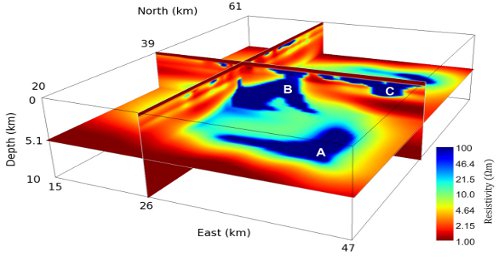In the November-December issue of Geophysics, EMGS geoscientists Sébastien de la Kethulle and Rune Mittet present a new and efficient MT (magnetotelluric) modeling and inversion scheme.

Magnetotelluric data can be a valuable complement to seismic data in geologic environments where it is challenging to use seismic, for example below basalt layers or in the presence of complex salt structures.
In their Geophysics article “3D marine magnetotelluric modeling and inversion“, EMGS geoscientists Sébastien de la Kethulle and Rune Mittet demonstrate how the finite-difference time-domain method can be applied to 3D marine MT (magnetotelluric) modeling and inversion. They also applied their new inversion scheme to a data set acquired in the western part of the Barents Sea.
Two advantages of the finite-difference time-domain method are its very low memory consumption, and the fact that modeling results can be obtained for all frequencies you need, in one go.
Read 3D marine magnetotelluric modeling and inversion
with the finite-difference time-domain method